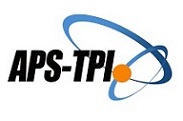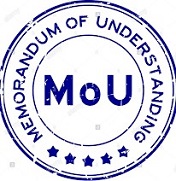Designing HOTS-Based Assessment Instrument for Hindu Religious Education in Junior High School
DOI:
https://doi.org/10.23887/jeu.v12i2.91845Keywords:
HOTS, Hindu Religious Education, Assessment Instrument, Critical ThinkingAbstract
The low level of critical and analytical thinking skills among students in understanding Hindu Religious Education materials indicates the need to develop an assessment instrument that fosters higher-order thinking skills (HOTS). This study aims to develop a HOTS-based assessment instrument for Hindu Religious Education in Grade IX of junior high school, with the goal of enhancing students' critical and analytical thinking abilities in comprehending the subject matter. The research employs the ADDIE model, which consists of five stages: analysis, design, development, implementation, and evaluation. The research subject comprises the developed instrument, with instrument feasibility as the research object. Data were collected using a questionnaire completed by expert lecturers and students of Hindu Religious Education. The results indicate that the developed instrument has a very high feasibility rating, based on trials conducted by lecturers with average percentages of 88.8% and 88.2%, respectively, falling into the "Very Feasible" category. The average score from the student response trial was 87.4%, placing the product within the "Very Good" category, which suggests its suitability for classroom use. It can be concluded that the developed assessment tool is not only valid and reliable but also effective in promoting critical thinking and cognitive engagement among students. By aligning the instrument with core competencies and HOTS indicators, this study contributes to ongoing efforts to improve educational practices, particularly in religious education.
References
Antara, I. G. W. S., Sudarma, I. K., & Dibia, I. K. (2020). The Assessment Instrument of Mathematics Learning Outcomes Based on HOTS Toward Two-Dimensional Geometry Topic. Indonesian Journal Of Educational Research and Review, 3(2), 19–24. https://doi.org/10.23887/ijerr.v3i2.25869.
Arifin, Z., & Retnawati, H. (2017). Pengembangan instrumen pengukur higher order thinking skills matematika siswa SMA kelas X. PYTHAGORAS: Jurnal Pendidikan Matematika, 12(1), 98. https://doi.org/10.21831/pg.v12i1.14058.
Branch, R. M. (2009). Instructional Design: The ADDIE Approach. Springer. https://doi.org/10.1016/b978-0-12-411355-8.50014-0.
Budiman, A., & Jailani. (2014). Pengembangan Instrumen Asesmen Higher Order Thinking Skill (HOTS) Pada Mata Pelajaran Matematika Smp Kelas Viii Semester 1. Jurnal Riset Pendidikan Matematika, 1(2), 139–150. https://doi.org/10.21831/jrpm.v1i2.2671.
Chong, E. J. M., Lim, J. S. W., Liu, Y., Lau, Y. Y. L., & Wu, V. X. (2016). Improvement of learning domains of nursing students with the use of authentic assessment pedagogy in clinical practice. Nurse Education in Practice, 20, 125–130. https://doi.org/10.1016/j.nepr.2016.08.002.
Dewi, D. M. R. (2020). Mengefektifkan Model Small Group Discussion (Diskusi kelompok kecil) Upaya Meningkatkan Motivasi dan Hasil Belajar Agama Hindu Peserta Didik Kelas IV Semester Dua Tahun Pelajaran 2018/2019 di SD Negeri 7 Mataram. JISIP (Jurnal Ilmu Sosial Dan Pendidikan), 4(2), 30–39. https://doi.org/10.36312/jisip.v4i2.1065.
Erfianti, L., Istiyono, E., & Kuswanto, H. (2019). Developing Lup Instrument Test to Measure Higher Order Thinking Skills ( HOTS ) Bloomian for Senior High School Students. International Journal of Educational Research Review, 4(3), 320–329.
Fung, D. C., & Liang, T. W. (2019). Fostering Critical Thinking Through Collaborative Group. In Insights From Hong Kong. Springer.
Grant, J. (2018). Principles of curriculum design. Understanding Medical Education: Evidence, Theory, and Practice, 71–88. https://doi.org/10.1002/9781119373780.ch5.
Hanifah, N. (2019). Pengembangan instrumen penilaian Higher Order Thinking Skill (HOTS) di sekolah dasar. Current Research in Education: Conference Series Journal, 1(1).
Hart, C., Da Costa, C., D’Souza, D., Kimpton, A., & Ljbusic, J. (2021). Exploring higher education students’ critical thinking skills through content analysis. Thinking Skills and Creativity, 41(May), 100877. https://doi.org/10.1016/j.tsc.2021.100877.
Irawan, K. A. (2018). Analisis Implementasi Intergrasi Pendidikan Karakter Dalam Pendidikan Agama Hindu Di Pasraman Se-Jabodetabek. Jurnal PASUPATI, 5(2), 108–135. https://doi.org/10.37428/pspt.v5i2.28.
Johansson, E. (2020). The Assessment of Higher-order Thinking Skills in Online EFL Courses: A Quantitative Content Analysis. NJES Nordic Journal of English Studies, 19(1), 224–256. https://doi.org/10.35360/njes.519.
Kazi, S., Kazali, E., Makris, N., Spanoudis, G., & Demetriou, A. (2019). Cognizance in cognitive development: A longitudinal study. Cognitive Development, 52. https://doi.org/10.1016/j.cogdev.2019.100805.
Masitoh, L. F., & Aedi, W. G. (2020). Pengembangan Instrumen Asesmen Higher Order Thinking Skills (HOTS) Matematika di SMP Kelas VII. Jurnal Cendekia : Jurnal Pendidikan Matematika, 4(2), 886–897. https://doi.org/10.31004/cendekia.v4i2.328.
Mulianti, Hala, Y., & Taiyeb, A. M. (2016). Pengembangan Instrumen Penilaian Autentik Pada Materi Sistem Ekskresi Di Kelas Xi Sma Negeri 1 Tellusiattinge. Jurnal Nalar Pendidikan, 4(2), 97–107.
Muna, K., Sanjaya, R. E., & Bakti, I. (2017). Metacognitive skills and students ’ motivation toward chemical equilibrium problem solving ability : A correlational study on students of XI IPA SMAN 2 Banjarmasin Metacognitive Skills and Students ’ Motivation toward Chemical Equilibrium Problem Solving. AIP Conference Proceedings, 1911(1). https://doi.org/10.1063/1.5016001.
Parmiti, D. P., Antara, I. G. W. S., & Wulandari, I. G. A. A. M. (2022). The Effectiveness of E-Scrapbook Media Containing HOTS Questions on Science Learning Outcomes of Elementary School Students. Journal of Education Research and Evaluation, 6(3), 484–491. https://doi.org/10.23887/jere.v6i3.52078.
Pitriani, N. R. V. (2020). Transformasi Pendidikan Di Era New Normal Perspektif Pendidikan Agama Hindu Ditinjau Dari Segi Sosio-Etika Pada Sekolah Tinggi Agama Hindu Negeri Mpu Kuturan Singaraja. Widyanatya, 2(2), 86–99. https://doi.org/10.32795/widyanatya.v2i02.1050.
Preus, B. (2012). Authentic Instruction for 21st Century Learning: Higher Order Thinking in an Inclusive School. American Secondary Education, 40(3), 59–79.
Pu, D., Ni, J., Song, D., Zhang, W., Wang, Y., Wu, L., Wang, X., & Wang, Y. (2019). Influence of critical thinking disposition on the learning efficiency of problem-based learning in undergraduate medical students. BMC Medical Education, 19(1), 1–8. https://doi.org/10.1186/s12909-018-1418-5.
Rahmawati, E., Yuberti, Y., & Irwandani, I. (2020). Pengembangan Instrumen Penilaian Otentik dengan Pendekatan Saintifik pada Pokok Bahasan Gerak Melingkar Kelas X SMA/MA. Gagasan Pendidikan Indonesia, 1(1), 12. https://doi.org/10.30870/gpi.v1i1.8047.
Rati, N. W., Arnyana, I. B. P., Dantes, G. R., & Dantes, N. (2023). HOTS-Oriented e-Project-Based Learning: Improving 4C Skills and Science Learning Outcome of Elementary School Students. International Journal of Information and Education Technology, 13(6), 959–968.
Rivaldo, I., Sutrisno, H., & Manik, A. C. (2022). The Use of The Rasch Model to Develop Students’ Conception of Chemistry Learning Instruments During the Covid-19 Pandemic. Jurnal Pendidikan Kimia Indonesia, 6(1), 20–29. https://doi.org/10.23887/jpk.v6i1.45338.
Sa’adah, A., Ningrum, F. Z., & Farikha, N. (2021). Scaffolding dalam pembelajaran trigonometri berbantuan soal HOTS untuk meningkatkan kemampuan literasi numerasi matematika. ProSANDIKA UNIKAL (Prosiding Seminar Nasional Pendidikan Matematika Universitas Pekalongan, 2, 167–174.
Sejati, A. E., Syarifuddin, S., Nasruddin, N., Miftachurohmah, N., & Hariyanto, E. (2021). The Effectiveness of Guided Inquiry Learning Model with Edmodo Assisted to Facilitate Critical Thinking Skills. Prisma Sains: Jurnal Pengkajian Ilmu Dan Pembelajaran Matematika Dan IPA IKIP Mataram, 9(2), 204–219. https://doi.org/10.33394/j-ps.v9i2.4260.
Sugiyono. (2014). Metode Penelitian Pendidikan (Pendekatan Kuantitatif, Kualitatif dan R&D). Alfabeta.
Sumandya, I. W., Gusti Agung Handayani, I., & Wayan Eka Mahendra, I. (2020). Developing Realistics Mathematics Education (Rme) Based Mathematics Teaching Video to Advance Higher Order Thinking Skills (Hots) in Cognitive Level of Vocational School Students. Journal of Physics: Conference Series, 1503(1). https://doi.org/10.1088/1742-6596/1503/1/012015.
Sutarto, H. P., & Jaedun, M. P. D. (2018). Authentic assessment competence of building construction teachers in indonesian vocational schools. Journal of Technical Education and Training, 10(1), 91–108. https://doi.org/10.30880/jtet.2018.10.01.008.
Tegeh, I. M., & Kirna, I. M. (2010). Metodeogi Penelitian Pengembangan Pendidikan. Universitas Pendidikan Ganesha.
Umami, R., Rusdi, M., & Kamid, K. (2021). Pengembangan instrumen tes untuk mengukur Higher Order Thinking Skills (HOTS) berorientasi Programme for International Student Asessment (PISA) pada peserta didik. JP3M (Jurnal Penelitian Pendidikan Dan Pengajaran Matematika), 7(1), 57–68. https://doi.org/10.37058/jp3m.v7i1.2069.
Widyana, I. K. (2018). Pendidikan Agama Hindu Berbasis Kearifan Lokal Kaharingan melalui Mata Kuliah Tawur di Sekolah Tinggi Agama Hindu Negeri Tampung Penyang Palangka Raya. Dharmasmrti: Jurnal Ilmu Agama Dan Kebudayaan, 18(2), 101–113. https://doi.org/10.32795/ds.v9i2.152.
Yurniwati, & Soleh, D. A. (2020). The effectiveness of computer-based problem solving to improve higher order thinking skills on prospective teachers. International Journal of Instruction, 13(2), 393–406. https://doi.org/10.29333/iji.2020.13227a.
Downloads
Published
How to Cite
Issue
Section
License
Copyright (c) 2024 Ni Luh Purnamasuari Prapnuwanti, Ketut Bali Sastrawan, Putu Wulandari Tristanda, L. Eka M. Julianingsih P

This work is licensed under a Creative Commons Attribution-ShareAlike 4.0 International License.
Authors who publish with the Jurnal EDUTECH Undiksha agree to the following terms:
- Authors retain copyright and grant the journal the right of first publication with the work simultaneously licensed under a Creative Commons Attribution License (CC BY-SA 4.0) that allows others to share the work with an acknowledgment of the work's authorship and initial publication in this journal.
- Authors are able to enter into separate, additional contractual arrangements for the non-exclusive distribution of the journal's published version of the work (e.g., post it to an institutional repository or publish it in a book), with an acknowledgment of its initial publication in this journal.
- Authors are permitted and encouraged to post their work online (e.g., in institutional repositories or on their website) prior to and during the submission process, as it can lead to productive exchanges, as well as earlier and greater citation of published work. (See The Effect of Open Access)








